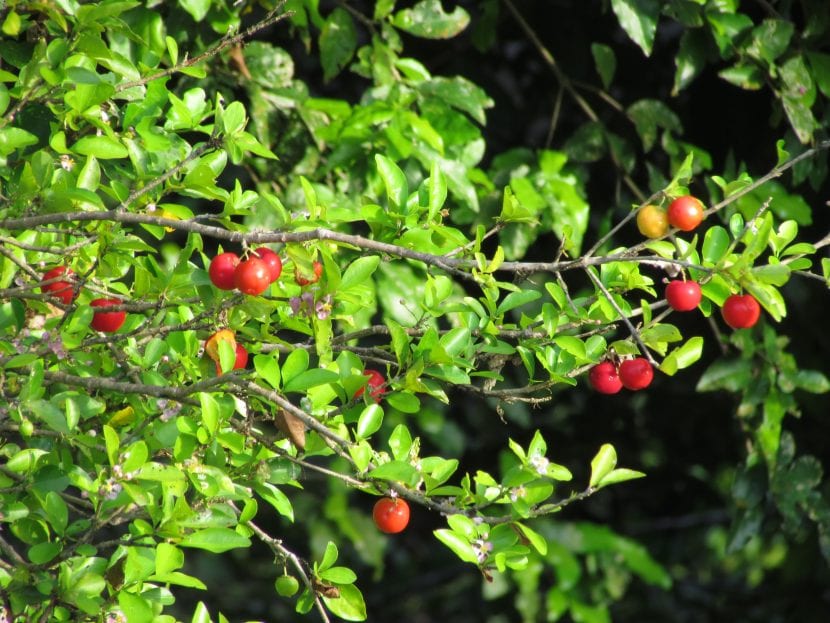
La malpighia emarginata It is a shrub or small tree native to Central America known as acerola that can be grown outdoors throughout the year in areas where the climate is warm-temperate. Even so, one of the interesting things about this plant is that it can be kept in a pot throughout its life, as it grows to a height of only five meters and, in addition, it tolerates pruning very well.
It is a plant that happens to be very practical: over time, it is able to provide a good shade, it is very decorative and to top it off its fruits are edible and highly nutritious.
Acerola characteristics
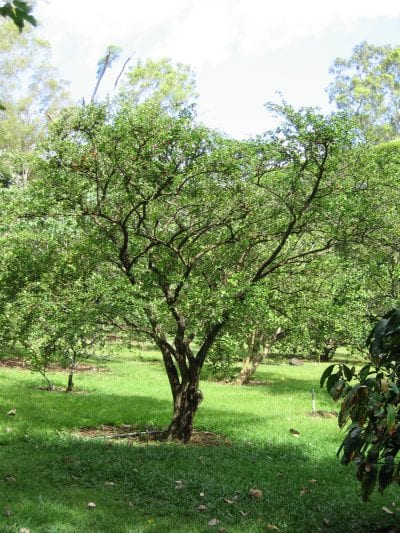
Image - NTBG.com
Our protagonist is a shrub that grows naturally in Central America, the Antilles and in the humid tropics of South America. Its scientific name is malpighia emarginata, and their common names are acerola, manzanita or semeruco. It reaches a height of between 3 and 5 meters. Has a highly branched crown, with simple, entire and opposite leaves, dark green in color and 5 to 12mm long.
The flowers are composed of five petals between 12 and 15mm in length, and are red, pink, lilac or white. The fruit It is a fleshy drupe of 1 to 2cm and about 20 grams in weight, red or yellow, containing three hard seeds. This one has a sour-sour taste since it contains from 1000 to 2000mg / 100 grams of vitamin C, which makes it the edible fruit with more ascorbic acid that has been discovered to date.
How do you take care of yourself?
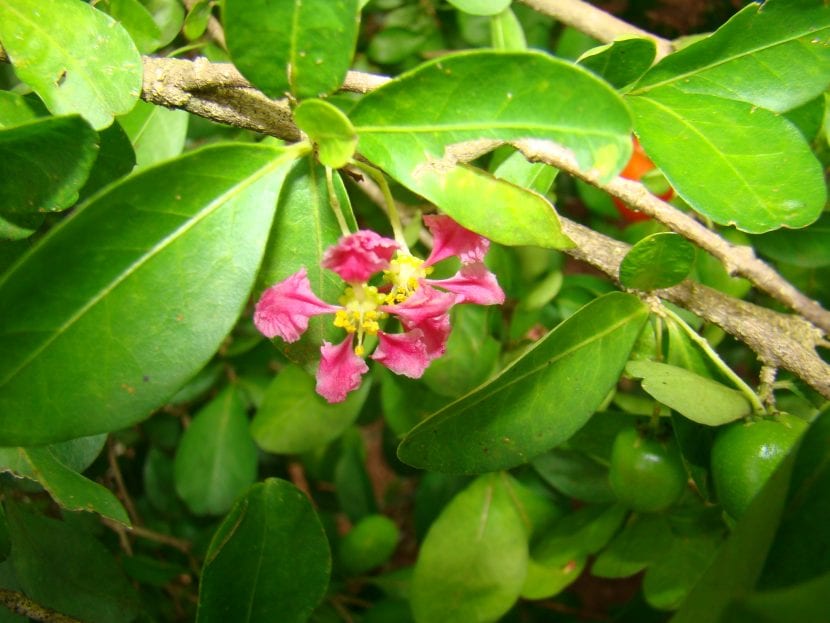
If you want to have one or more specimens in your garden or orchard, then we explain how you should take care of it / s:
Location
In order for it to grow properly it is important that is located outside in full sun or in semi-shade (You have to give it a minimum of four hours of direct light).
Although it is a plant that occupies relatively little space, it could be interesting to have it as an isolated specimen or at a distance of about two-three meters from other shrubs or tall trees in order for it to develop well. Its roots are not invasive.
Soil or substrate
- Land: it grows in all types of soils, but it must have good drainage to avoid waterlogging and subsequent rotting of the root system.
- Substratum: if it is potted, it is advisable to mix universal growing medium for plants with perlite, claystone or other similar material. Inside the container as the first layer you can choose to put volcanic clay.
Irrigation
Irrigation it has to be frequent. It must be borne in mind that it is a plant native to regions where it rains on a regular basis, so it is necessary to avoid that the soil or the substrate is dry for too long. Therefore, in summer it should be watered three or four times a week, and during the rest of the year every four or five days.
When in doubt, check the humidity. To do this, simply insert a thin wooden stick (if it comes out practically clean it can be watered since it will be dry), or using a digital humidity meter.
Subscriber
Throughout the growing season, that is, from spring to late summer, must be paid with organic fertilizers such as guano, manure or earthworm humus. But yes, if it is in a pot it will be very important to use liquid fertilizers so that drainage is not hindered.
The amount will depend on each type of fertilizer, so it is advisable to read the label to avoid overdoing the dose.
Planting or transplanting time
Whether you want to move to the ground or to a larger pot, you have to do it early spring when the risk of frost is over.
Multiplication
Multiply by seeds, which are sown directly in the seedbed with vermiculite in spring.
Rusticity
It is very sensitive to cold. It supports temperatures of up to -2 degrees Celsius, but grows better if the minimum temperature is at least 10ºC. In the case of living in an area where frost occurs, it can be kept indoors in a bright room without drafts.
What is acerola used for?
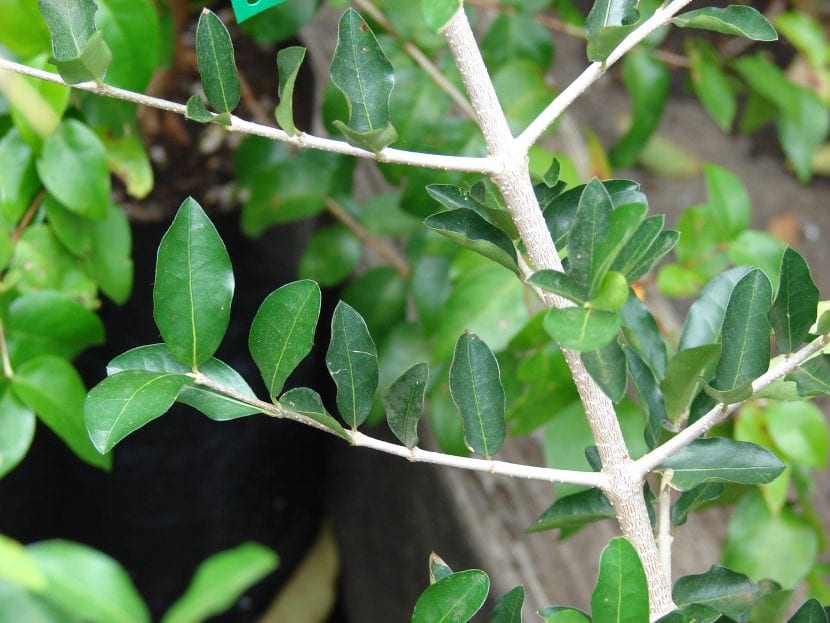
Acerola has several uses:
Ornamental
It's a plant very decorative that looks good in almost any corner. In addition, as we mentioned before, it gives an interesting shadow.
Culinary
The fruits are used for make jams and sweets. They are very nutritious. The composition per 100 grams is as follows:
- Carbohydrates: 7,69g, of which 1,1g correspond to dietary fiber
- Fat: 0,3g
- Proteins: 0,4 g
- Vitamin B1: 0,02mg
- Vitamin B2: 0,06mg
- Vitamin B3: 0,04mg
- Vitamin B5: 0,309mg
- Vitamin B6: 0,009mg
- Vitamin C; 1677,6mg
- Calcium: 12mg
- Iron: 0,2mg
- Magnesium: 18mg
- Manganese: 0,6mg
- Phosphorus: 11mg
- Potassium: 146mg
- Sodium: 7mg
- Zinc: 0,1mg
Medicinal
The medicinal properties of this plant are very interesting since strengthens the immune system and alleviates the symptoms of cold, flu, bronchitis and other respiratory diseases that a human being can suffer from.
It is also a natural remedy that can be used to decrease sore throat and gastritis, and to delay aging. It is also used against diabetes and as an aid to treat cardiovascular problems like hypertension
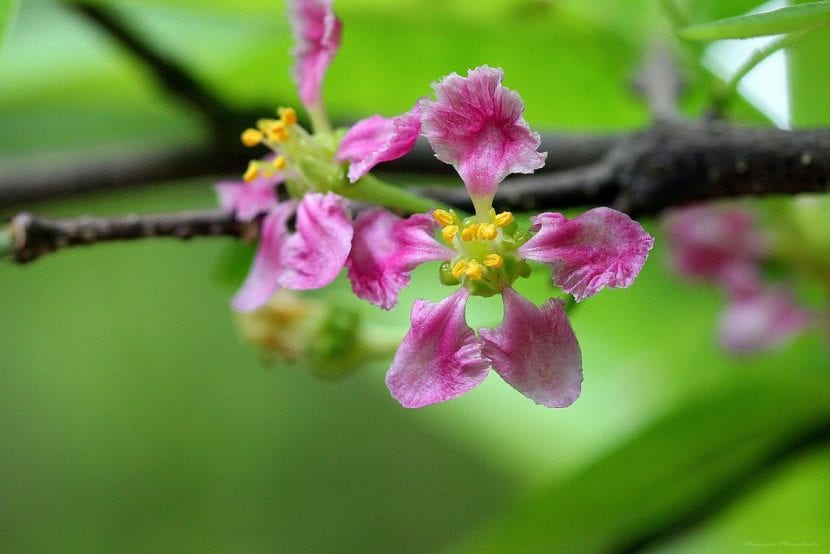
What did you think of this acerola?
Very interesting.
Pruning, is it done at a particular time?
Up to what height can its growth be limited?
Hi Saul.
You can prune it at the end of winter (in the northern hemisphere it would be equivalent to the months of February / March), up to a height of 1 or 2 meters.
Greetings.
The only method of propagation is sexual, via seed, or can we recommend vegetative reproduction? If you can answer me, I would appreciate it very much.
Hi Ronald.
By seeds sure, but by cuttings it could also be done, if semi-woody branches are taken before they resume their growth.
Greetings.
How long does it take to bear edible fruit?
Hello Belarmina.
I could not tell you. It will depend on the climate and how it is grown, but in principle if everything goes well it should not take more than 7 years (from seed).
Greetings.
Buenas tardes. I live in Murcia (Spain). I would like to know where I can buy seeds or seedlings?
Hello manuela.
I recommend you look in online stores, for example in the Tropical Fruits they have seedlings.
Regards!